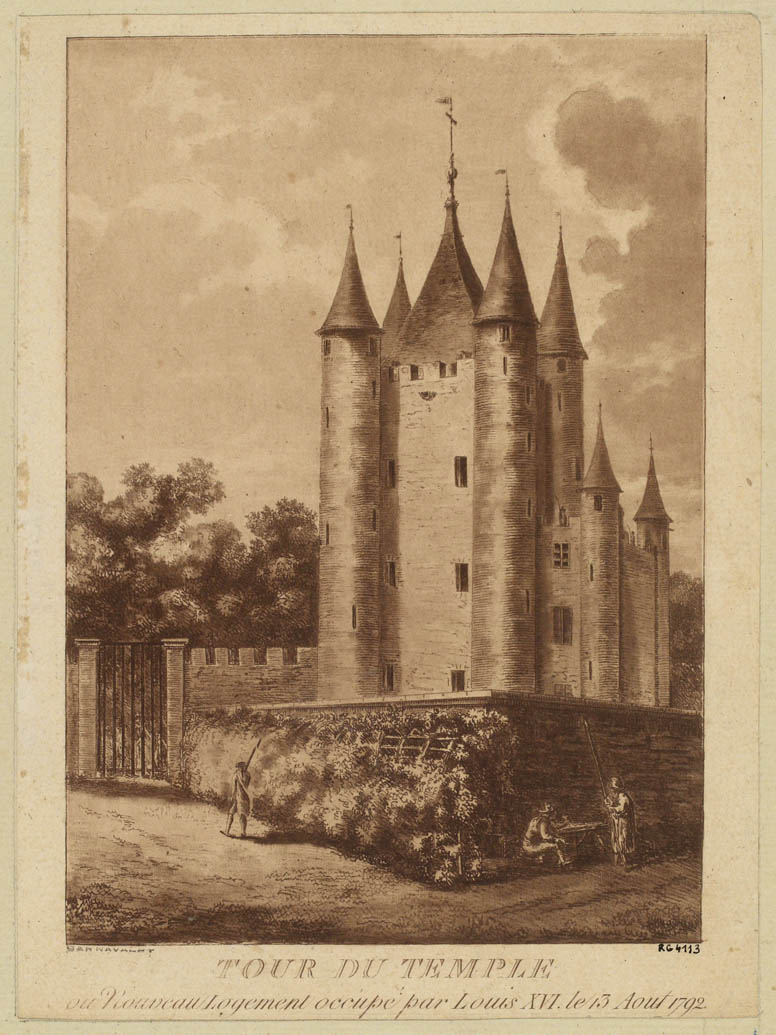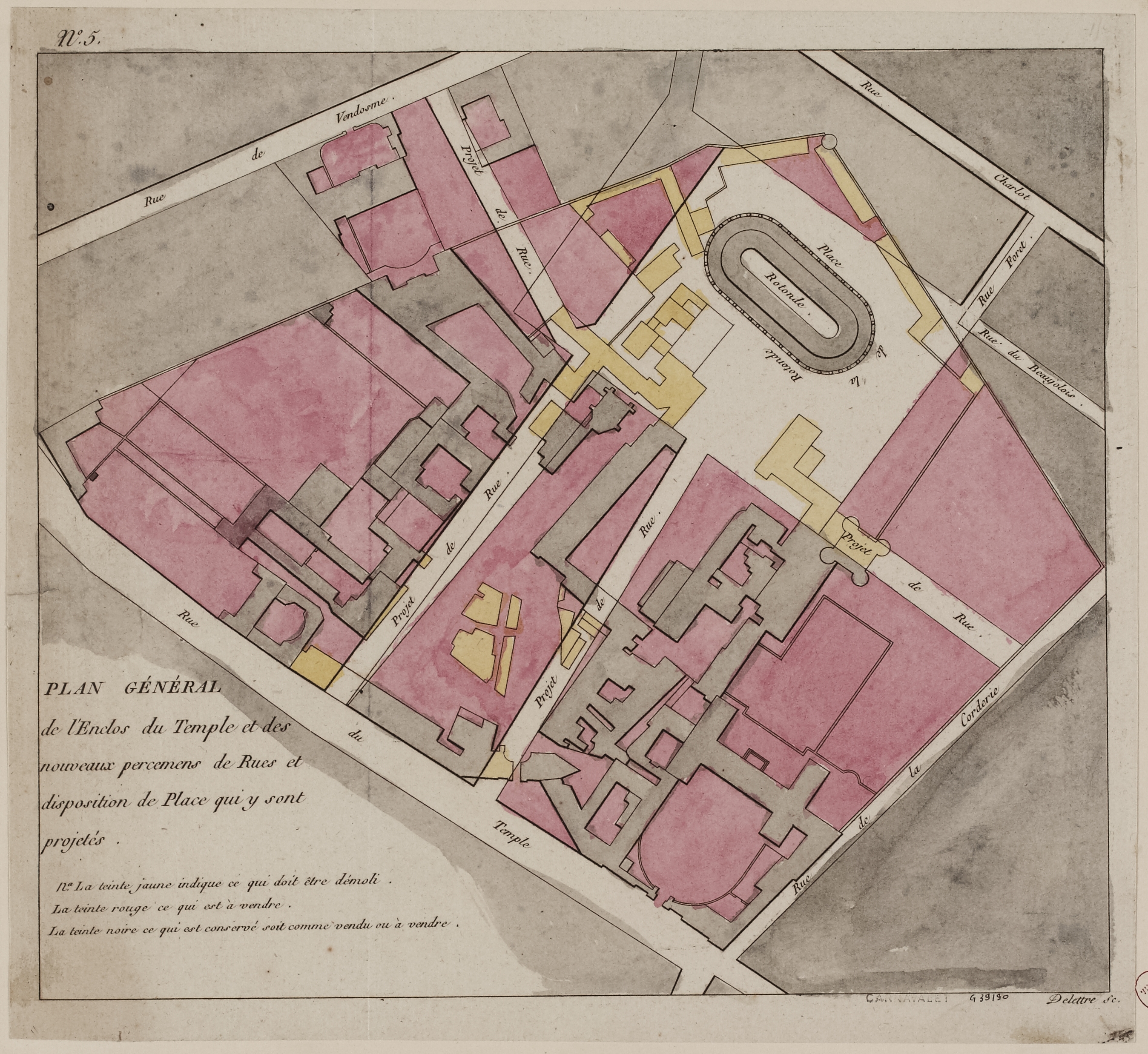Temple and its Neighborhood
“Rue du Temple,” “rue du Faubourg-du-Temple,” “boulevard du Temple,” etc., the names of these streets still preserve the memory of a site that no longer exists today: the House of the Templars. During the Revolution, this 6-hectare space was like a city within a city. The large medieval keep echoed that of the Bastille, located further to the south. It was in the Temple’s keep that the royal family was imprisoned after the fall of the monarchy (August 10, 1792). At this time, the neighborhood was primarily working class. Long and wide, the boulevards du Temple, Saint-Denis and Saint-Martin attracted businesses and theaters and this is where protestors marched during the “Revolutionary days.” Further to the north, the Farmers General wall, built around Paris in order to collect taxes more efficiently, surrounded the Temple and Saint-Martin neighborhoods: this was the city of artisans and laborers.

 Chronology
Chronology
-
Early September 1792
Prisoners in the Carmes monastery are massacred -
July 13, 1789
The Saint-Lazare monastery is pillaged -
August 13, 1792
Incarceration of the royal family in the Temple fortress -
January 21, 1793
Louis XVI leaves the Temple fortress to be executed on the Place de la Révolution (now Concorde) -
1794
Foundation of the Conservatoire national des métiers -
1794
The Saint-Lazare prison becomes a women’s prison -
June 8, 1795
Death of the heir apparent, the future Louis XVII, in the Temple fortress -
1798
Installation of the Conservatoire national des métiers in the former Saint-Martin-des-Champs priory






